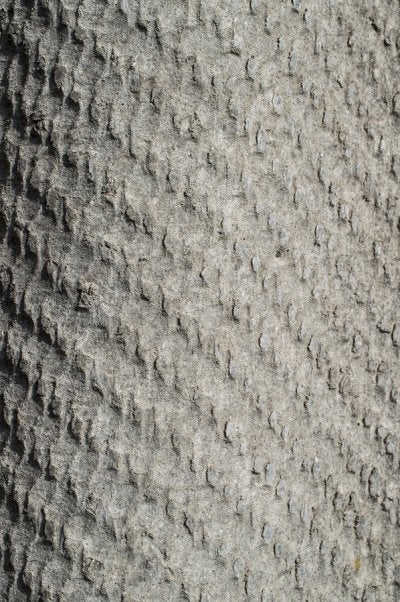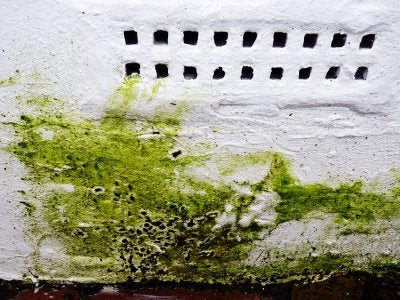-
Getting Rid of Household Mold
Not only is household mold an unpleasant thing to live with, but it also can pose a serious health risk, especially for those who suffer from respiratory issues such as asthma or COPD (chronic obstructive pulmonary disease). If you have mold growing in your home, contact an experienced professional who specializes in mold inspection and mold remediation in San Francisco.
One effective way to get rid of mold is to reduce the amount of moisture inside your home. Watch this video to find out what else you can do if you suspect mold in your home, or if you’re experiencing symptoms of mold exposure.
-
Asbestos Exposure and Your Health
In this day and age, most people are aware of how prolonged asbestos exposure can adversely affect the health of humans. When inhaled, asbestos in San Francisco can wreak havoc on the lungs and cause cancer, among other things. If you live in a home with asbestos in San Francisco , you should hire a licensed and experienced professional to perform an asbestos test, and then to get rid of it. Though it may end up being a costly project, having all of the asbestos removed from your home is well worth the money.
What Asbestos Is

Asbestos is an umbrella term used to classify any member of a group of naturally occurring silicate minerals that form long, ultra thin, and fibrous crystals. Since these minerals are invulnerable to high temperatures and are fire-resistant, they were popularly used as construction materials for homes and offices.Asbestos and Cancer
Since asbestos is a known carcinogen, it fell out of favor in the late 1970s. Because its fibrous crystals are microscopic and can become airborne, asbestos can be easily breathed in, and can cause a lung and abdominal cancer called mesothelioma. Asbestos can also be responsible for other cancers such as lung cancer, laryngeal cancer, ovarian cancer, and testicular cancer. Once inside the body, asbestos crystals are often found trapped in the lining of the lungs, abdomen, and heart. Asbestos fibers can cause a lot of damage to human tissues, and this damage is the precursor to mesothelioma and other cancers.Asbestos Exposure
Most people who develop mesothelioma or asbestos-related cancer had industrial jobs, and were exposed to asbestos in their workplace—that is, construction sites, power plants, chemical plants, shipyards, auto body shops, old schoolhouses, and boiler rooms.Other Diseases Caused by Asbestos
Prolonged and repeated asbestos exposure may cause other diseases. One such disease is an inflammatory lung condition called asbestosis—symptoms include coughing, shortness of breath, and lung damage. Asbestos can also cause benign growths such as pleural plaques and pleural effusions. -
The Dangers of Waiting to Test Your Home
Your home is a place that you and your family should feel comfortable and safe in. If you’re in the market to purchase a new home, or if you’ve lived in your current house for years without knowing what’s on or behind its walls, consider hiring a professional to administer an asbestos, lead paint, or mold test in San Francisco as soon as possible. Older homes, especially those built before the 1970s, tend to have evidence of these toxic agents.
There are real dangers associated with waiting to test your home. Prolonged asbestos exposure can lead to serious health problems such as lung disease and mesothelioma. Dust from deteriorating lead paint can circulate throughout your home, and may end up in your lungs or in your drinking water—children and pregnant women are particularly susceptible to lead poisoning. Mold infestations, especially black mold infestations, can cause a whole host of health problems ranging from being benign to being potentially fatal. Symptoms of mold exposure include watery eyes, itching, sneezing, cough, asthma, fatigue, and brain and nerve damage.

-
Understanding the Mold Testing Process
No one wants to live in a home, or work in an office, that is filled with mold. Luckily, there are ways to test for mold. If you suspect that you may have mold growing in your home, don’t hesitate to contact a mold remediation professional in San Francisco to schedule an inspection and a mold test .
Common Types of Mold Found in Homes

Knowing how to identify mold is your first line of defense against it. When mold is growing out in the open, it’s pretty easy to recognize—it looks like dark-colored fuzz, usually occurring in clusters or spotted patches speckled across a surface. There are three types of mold that are commonly found in homes: Aspergillus , Cladosporium , and Stachybotras . The first two are relatively harmless, mainly responsible for minor allergic reactions and lung issue. Stachybotras , on the other hand, can really be cause for concern. Known as toxic black mold, Stachybotras can pose a serious health risk, and may send you to the emergency room if you’ve been continually exposed to it for a steady period of time. If you have black mold in your home, you need to call a mold remediation expert immediately.Testing for Mold Using Store-Bought Test Kits
Ideally, when testing your home for mold, you want to perform the test before a deep cleaning, and then again afterward to make sure that you’ve eradicated the problem.You can readily purchase a mold test kit at your local hardware or home-improvement store. These kits are fairly straightforward to use, usually requiring homeowners to send prepared samples to a laboratory. They range in prices depending on the companies and how involved the tests are. Be forewarned – these test kits have been known to be unreliable.
Hiring a Professional
For peace of mind, hire a professional mold specialist to test your home. Only a trained technician has the knowledge and proper equipment to perform a comprehensive and accurate test.
RECENT POSTS
categories
- Uncategorized
- Lead
- Mold
- San Francisco Mold & Asbestos Removal
- Indoor Air Pollution
- Mold Remediation
- Asbestos
- Safe Air Fast
- Mold Inspection
- Remediation
- Bacteria Testing
- Asbestos Testing
- Abatement
- Lead Testing
- Sewer Line
- Lead Survey
- Mold Testing
- Air Quality Inspection
- Home renovations
- Allergies
- Renovation Contractor
- Infographic
- lead paint
- Air Quality
- Air Quality Test
- Mold removal
